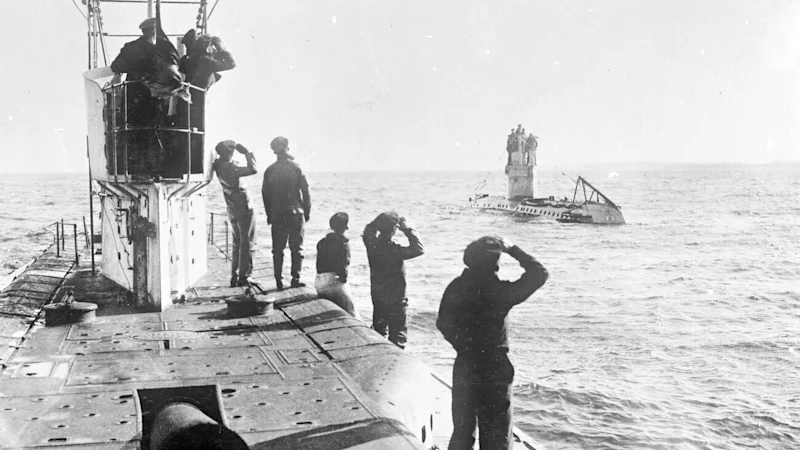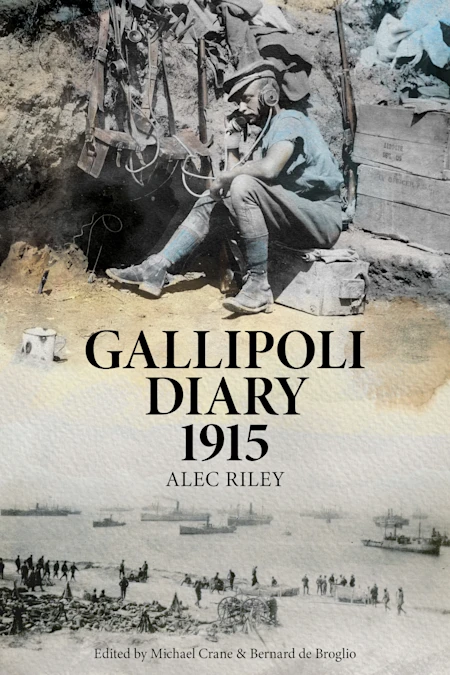
The silent menace: how submarines nearly strangled the Mediterranean in the Great War
Over 1,700 vessels sunk in a campaign that brought Britain to the brink of starvation by 1917. Explore the data at subs.littlegully.com

Alec Riley’s First World War diaries
By Alec Riley, Michael Crane (Editor), Bernard de Broglio (Editor)
Alec Riley, a signaller with the British Army’s 42nd Division, reached Cape Helles on 6 May 1915. ‘We landed,’ he wrote, ‘in an enemy’s country, without his permission, and the event was entirely without romance.’
Riley had the rare opportunity to move freely about the Allied lines, being attached to different battalions during his four months on the Gallipoli peninsula. He kept a diary and made detailed notes, adding to them ‘while recollections were vivid, and while small details, colours, shapes, could be visualised accurately’.
After the war, Riley returned twice to the peninsula in pilgrimage, traversing once-familiar trenches and thoroughfares at Helles, capturing with his camera the overgrown battlefield and its newly-ordered cemeteries. ‘The places dealt with in the diary,’ he writes, ‘have, therefore, been seen from the Turkish and our own points of view…’
Riley sought to publish his experiences in a more literary form but sadly his manuscripts failed to find a publisher. By the 1930s, the public’s appetite for soldier’s memoirs had abated. Later, his diaries lay disregarded in the archives. As such, an eloquent voice from the campaign has gone unnoticed, and a valuable account of trench and nullah lost for years. For this reason we’ve resolved to get all three of Riley’s notebooks into print, starting with the central work, his ‘Gallipoli diary 1915’.
In addition to the diary text, readers will find two evocative articles by Riley about his return to Gallipoli. They are probably extracts from his lost manuscript ‘Return to Cape Helles’. There is also an unpublished comment by Sir Ian Hamilton with whom Riley had a decade-long correspondence.
The editors have supplemented the text with annotations, maps and photographs. There are almost 60 biographies, covering most of the men of No. 4 Section, Manchester Brigade, 1/1st East Lancs Sig. Coy, RE, as well as commanding officers in the 42nd Division and VIII Corps. These are accompanied by an Order of Battle and Field State for the 42nd (East Lancashire) Division showing all units that embarked for Gallipoli.
Gallipoli Diary 1915 will appeal to readers of WWI and military history, but especially to those with an interest in the Gallipoli campaign. It is bookended by two further diaries that record Riley’s mobilisation and training in Egypt, and his time in the Royal Victoria Hospital, Netley. Collectively they offer a unique window into the experiences of a pre-war Territorial soldier, before, during and after Gallipoli.
Riley’s book will take its place alongside the very best Gallipoli accounts. No grandstanding, no purple prose, just a brilliant reflection of the raw mixture of nerve-shredding drama, tedium, and discomfort that typified life on the peninsula. Curated and brought to publication by two acknowledged Gallipoli experts, its long-delayed publication is a real event.
— Peter Hart, author of Gallipoli (2011) & The Gallipoli Evacuation (2020)
An extraordinary book from anything but an ordinary Gallipolian. Riley’s gem of an account, recently discovered by the authors, brings alive the campaign in a vivid, well-written and compelling true story of one man’s war.
— Stephen Chambers, Gallipoli Association historian & author of six Gallipoli guide books
A unique window into the experiences of a pre-war territorial soldier, before, during and after Gallipoli.
View all books in this seriesTerritorial soldier in the Manchester Brigade of the British Army’s 42nd (East Lancashire) Division. Riley served as a signaller in the Gallipoli Campaign of 1915.
Read more about Alec RileyWe respect your privacy. Unsubscribe at any time.